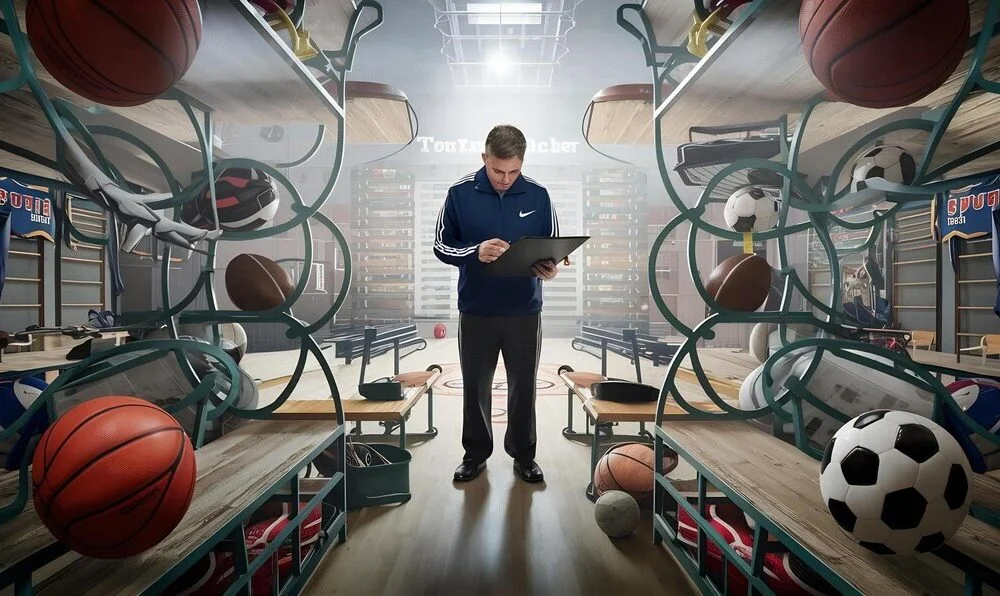Sports are constantly evolving, and every decade introduces a new breakthrough that reshapes how athletes train, compete, and recover. One of the most exciting developments to emerge recently is Sports Harmonicode Veneajelu—a concept that blends advanced biomechanics, harmonic motion theories, and neuromuscular optimization. Although it sounds futuristic, experts believe it is set to transform competitive sports across disciplines. In this article, we’ll dive deep into what Sports Harmonicode Veneajelu is, why it matters, and how it could reshape the future of athletics.
Understanding Sports Harmonicode Veneajelu
Defining the Concept
Sports Harmonicode Veneajelu is an innovative framework that integrates harmonic motion codes (a mathematical approach to movement) with specialized training techniques designed to maximize an athlete’s natural biomechanics. Think of it as a bridge between physics and athletic performance. The term “harmonicode” refers to the idea that every movement—whether a sprinter’s stride or a gymnast’s spin—follows patterns that can be mapped, measured, and optimized.
The “veneajelu” component is about application: using these codes in practical, sport-specific scenarios. Veneajelu draws on disciplines like kinematics, muscle elasticity, and neural feedback systems. When combined, these elements create a holistic system that teaches athletes how to move in perfect rhythm with their body’s natural tendencies.
While the terminology might seem complex, the philosophy is simple: to make athletic performance more efficient, reduce injury risk, and unlock levels of movement that were previously thought impossible.
How It Works in Practice
To apply Sports Harmonicode Veneajelu, athletes undergo motion mapping using high-speed cameras, wearable sensors, and harmonic algorithms. These tools break down their movements into data points. Coaches then analyze the “harmonic codes” to identify inefficiencies or imbalances.
For example, a tennis player might unknowingly apply uneven force during a backhand swing. By identifying this through harmonic analysis, coaches can help the player adjust their technique to align with optimal harmonic patterns. Over time, these adjustments improve accuracy, power, and stamina while reducing unnecessary strain on joints.
This method isn’t restricted to elite athletes. Amateur players and even rehabilitation patients benefit by learning how to move in ways that minimize stress and maximize energy efficiency.
Why the Sports World Is Paying Attention
Sports Harmonicode Veneajelu has sparked interest across major athletic organizations. Professional football teams have started hiring harmonicode specialists to enhance player performance. Meanwhile, sports academies and Olympic committees are exploring how these principles can provide a competitive edge.
Its appeal lies in measurable results. Early studies suggest that athletes trained under harmonicode principles experience a 15–20% reduction in injury rates and a notable improvement in reaction times. For sports where fractions of a second or minor changes in form can determine victory, these benefits are game-changing.
The Science Behind Harmonic Motion and Biomechanics
Harmonic Motion in Athletics
Harmonic motion is a concept from physics describing repetitive, oscillating movement. In sports, every action—from a swimmer’s stroke cycle to a runner’s stride—can be understood through these patterns. By decoding these motions, coaches can identify which movements are efficient and which are wasting energy.
Consider a basketball player shooting free throws. The motion involves a complex series of muscle activations, joint movements, and timing sequences. If even one element falls out of harmony, accuracy suffers. Harmonicode training ensures every part of the motion works together seamlessly.
This isn’t just theoretical. Several pilot programs have shown that athletes who train with harmonic-focused drills develop smoother, more consistent movements, leading to improved performance under pressure.
Neuromuscular Optimization
Another critical piece of Sports Harmonicode Veneajelu is neuromuscular optimization. Our nervous system controls muscle movement, and often, athletes develop “bad habits” over years of training. These habits can lead to inefficiencies or even injuries.
Through targeted exercises, harmonicode training rewires the brain-muscle connection. For instance, a sprinter may learn to fire certain muscle groups milliseconds earlier to achieve a more explosive start. Over time, these small adjustments add up to significant performance gains.
By working with a combination of motion analysis software and expert trainers, athletes retrain their neuromuscular systems to perform movements in the most efficient, harmonious way possible.
Biomechanical Efficiency and Energy Conservation
One of the most compelling aspects of Sports Harmonicode Veneajelu is energy conservation. Many sports demand extended periods of peak performance, and wasted energy can be the difference between winning and losing. By refining movement through harmonic analysis, athletes use less energy for the same output.
Cyclists, for example, can improve pedal efficiency, reducing fatigue during long races. Similarly, soccer players can sustain high-intensity efforts for longer by optimizing running strides. The cumulative effect over a game or match can provide a significant edge over opponents.
Applications Across Different Sports
Track and Field
Track athletes are some of the biggest beneficiaries of harmonicode methods. Sprinters can improve their starts, while distance runners can perfect their pacing mechanics. The harmonic approach ensures every stride is maximized for speed and efficiency, helping athletes shave valuable milliseconds off their times.
Pole vaulters and long jumpers also benefit. Their sports demand precise timing and body control, which harmonicode analysis can fine-tune. By aligning their movements with harmonic principles, they achieve more consistent, higher-quality performances.
Team Sports: Football, Basketball, and Soccer
In team sports, where agility, speed, and reaction time are critical, harmonicode training has shown impressive results. Football players can improve tackling technique to reduce injury risk. Basketball players can refine their jump shot mechanics for greater accuracy. Soccer players can optimize their kicking power while reducing wear on their knees and hips.
Coaches are particularly excited about harmonicode’s potential to reduce overuse injuries. By balancing movements and reducing unnecessary strain, athletes can extend their careers and maintain peak performance longer.
Combat and Extreme Sports
Even in combat sports like MMA and boxing, harmonicode techniques are gaining traction. Fighters can optimize punch mechanics or improve their footwork’s fluidity, leading to quicker and more powerful strikes.
In extreme sports—like skateboarding or snowboarding—where balance and smooth transitions are essential, harmonicode training offers a new way to master difficult tricks and maintain control under challenging conditions.
Training Techniques in Sports Harmonicode Veneajelu
Wearable Technology and Real-Time Feedback
A cornerstone of harmonicode training is wearable technology. Devices like motion sensors and smart compression suits provide real-time feedback on movement patterns. Athletes can instantly see where they are out of harmony and adjust on the spot.
For example, a runner might receive haptic feedback on their wrist if their stride length becomes inconsistent. Over time, this kind of feedback builds muscle memory and makes efficient movement second nature.
Specialized Drills and Exercises
Harmonicode trainers have developed drills tailored to different sports. For swimmers, these might include resistance exercises that train muscle groups to fire in harmony. For gymnasts, balance-focused movements teach control and fluidity.
These drills aren’t just about strength or endurance—they focus on timing, rhythm, and precision. Athletes often report feeling more “in tune” with their bodies after just a few weeks of harmonic training.
Mental Conditioning and Visualization
Sports Harmonicode Veneajelu also incorporates mental conditioning. Visualization exercises help athletes mentally rehearse perfect, harmonic movements. Studies have shown that mental practice can be nearly as effective as physical practice for improving performance.
Athletes use guided visualization sessions to “feel” the rhythm of optimal movements. Over time, this strengthens the neural pathways involved in those motions, making them more automatic during competition.
The Future of Sports Harmonicode Veneajelu
Integration with AI and Machine Learning
Artificial intelligence is expected to play a huge role in the future of harmonicode training. Machine learning algorithms can analyze massive datasets of athlete movements, spotting patterns that even expert coaches might miss.
Imagine a basketball player receiving AI-generated feedback on shot mechanics or a golfer getting personalized harmonic patterns for their swing. As AI becomes more sophisticated, harmonicode training will become even more precise and accessible.
Potential for Widespread Adoption
While Sports Harmonicode Veneajelu is still emerging, its potential for widespread adoption is enormous. High schools and amateur leagues are beginning to experiment with these methods, not just professional teams. As costs for wearable tech and analysis software drop, more athletes will have access to these tools.
In the next decade, we might see harmonicode principles integrated into standard athletic training programs. Just as video analysis became a staple for coaches, harmonicode could become a baseline expectation for competitive sports.
Beyond Sports: Rehabilitation and Daily Fitness
The benefits of harmonicode training go beyond competitive athletics. Physical therapists are already exploring how harmonic principles can speed up rehabilitation for injuries. Patients recovering from knee surgeries, for instance, can use harmonic training to regain strength and proper movement patterns more quickly.
Even casual fitness enthusiasts can use harmonic exercises to improve posture, prevent injuries, and make workouts more efficient. The same principles that help elite athletes perform at their peak can help anyone move better in daily life.
Conclusion: A New Era of Athletic Mastery
Sports Harmonicode Veneajelu represents a fascinating intersection of science, technology, and athleticism. By decoding and optimizing the natural rhythms of human movement, it offers a path to higher performance, fewer injuries, and more enjoyable athletic experiences.
As the sports world embraces this innovative approach, we’re likely to see athletes reaching levels of mastery once considered impossible. Whether you’re a professional player, a coach, or a weekend warrior, understanding and applying harmonic principles could be the key to unlocking your full potential.
In the years ahead, expect Sports Harmonicode Veneajelu to become more than a trend—it’s poised to become a cornerstone of athletic development. The fusion of harmonic science and sports training is here to stay, and its impact will be felt across every arena, field, and court.


